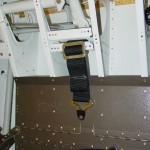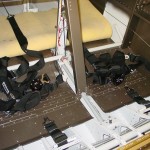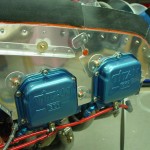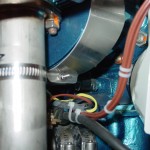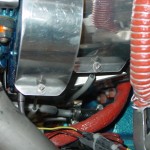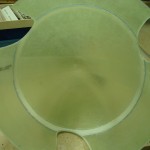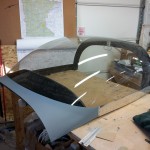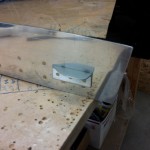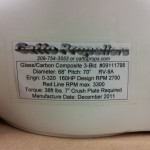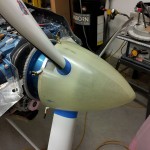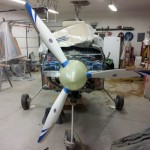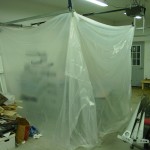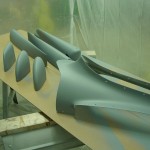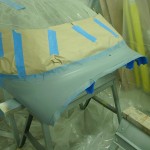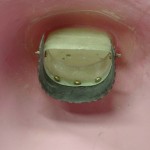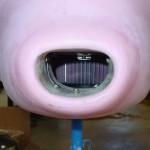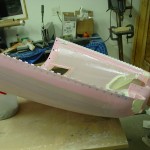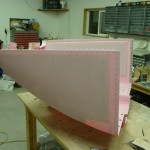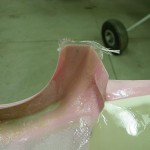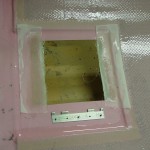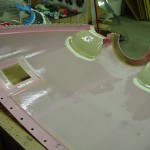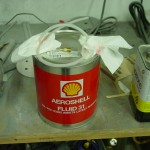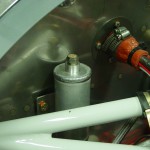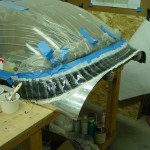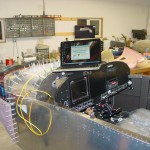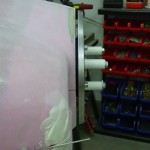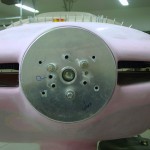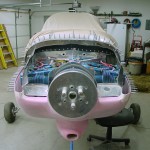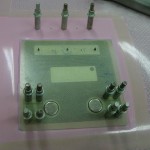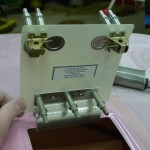Bits ‘n’ pieces
Several list items in this weekend’s work session.
Having received the 1/4″ threaded drill I needed, drilled & deburred the crotch strap mounting holes. Installed the crotch straps. Drilled 1/4″ attach holes in the lap and shoulder belt attach points, and mounted those (RH lap belt temporary, as I ran out of the correct length AN4 bolts).
Final-installed the baffle screws with lockwashers. Replaced temporary nuts with metal locknuts on baffle mounting brackets. Fabricated and temporary-installed the baffle tension rods (need #6 metal locknuts), with nylon tube over the middle parts; they don’t contact anything as is, but should something shift, the nylon will prevent wear until the next inspection/oil change/etc.
Applied packing tape to the forward spinner bulkhead, laid a bead of flox on the inside of the spinner at the contact point, and clecoed it in place. There was a moment of concern when the spinner didn’t want to release from the tape after curing for a few hours–I wanted to let the flox set up to hold proper shape before removing the spinner. After pushing, prodding, tapping, and finally whacking it on an angle (it took quite a few good double-fisted whacks…that’s a strong piece of fiberglass…), one section popped loose and I was able to work it free. Trimmed the squeezed-out flox off with a knife, to save weight and keep the spinner as balanced as possible, since this is part of the rotating mass.
Hours: 8.3 | Posted in Cabin & Interior, Cowling & Baffles, Engine | Comments Off
